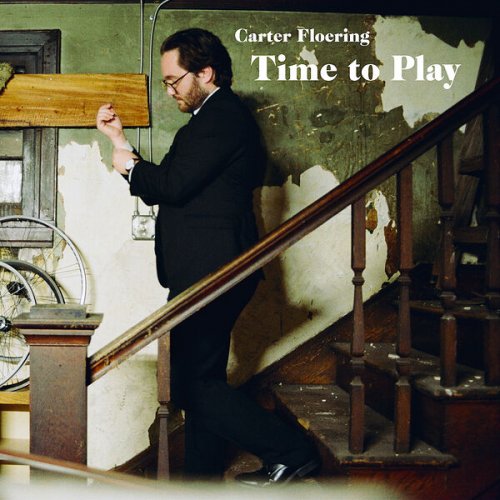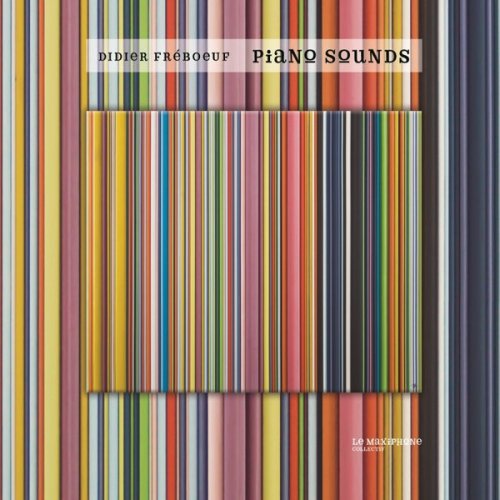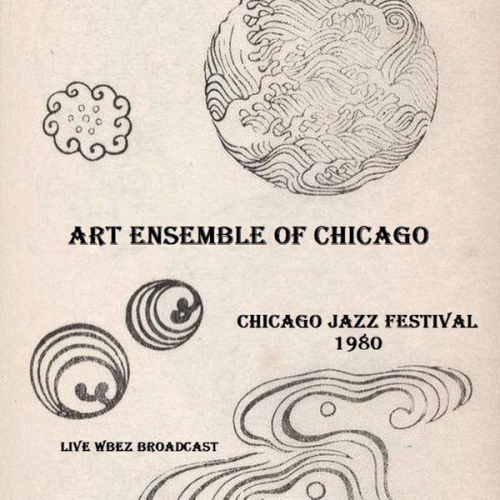Artist:
Jane Ira Bloom
Title:
Art and Aviation
Year Of Release:
1992
Label:
Arabesque Jazz[AJ0107]
Genre:
Jazz, Contemporary Jazz
Quality:
FLAC (tracks + .cue,log,scans)
Total Time: 58:06
Total Size: 303 MB(+3%)
WebSite:
Album Preview
Tracklist01. Gateway to Progress (5:26)
02. Further into the Night (6:48)
03. Hawkins' Parallel Universe (6:52)
04. Straight No Chaser/Miro (5:46)
05. Oshumare (8:01)
06. Art & Aviation (7:15)
07. Most Distant Galaxy (8:11)
08. I Believe Anita (5:56)
09. Lost in the Stars (3:51)
personnel : Jane Ira Bloom - soprano saxophone, live electronics
Kenny Wheeler - flugelhorn, trumpet (#1,2,4-6,8)
Ron Horton - trumpet (#2-4)
Kenny Werner - piano (#2,5)
Michael Formanek - bass (#1,3,6,8)
Rufus Reid - bass (#2,4,5,7)
Jerry Granelli - drums, elektro-acoustic percussion (#1-8)
Art & Aviation is not only one of Jane Ira Bloom's finest albums, it is also a remarkably successful (and fairly early) attempt to bring electronic influences to bear on acoustic jazz. Bloom's writing is strongly infused with a straight-ahead jazz aesthetic. But she veers left on many cuts, altering her soprano sax sound with live electronics and also having drummer Jerry Granelli double on electro-acoustic percussion. While most tracks still sound very much like jazz, the electronics, while never becoming obtrusive, give everything an unpredictable edge. "Most Distant Galaxy" and the title track are Bloom's most radical departures, but there are electronics aplenty, even on her subtle reworking of Thelonius Monk's "Straight No Chaser." The inimitable trumpeter Kenny Wheeler, who makes relatively few sideman appearances, shares the front line with Bloom. Ron Horton, who would later go on to join the Jazz Composers Collective, replaces Wheeler on two cuts. Pianist Kenny Werner also appears on two tracks -- the only ones to feature a chordal instrument. On all the others, alternating bassists Rufus Reid and Michael Formanek sketch out the harmony while laying down the bottom. The complex, angular soprano/trumpet unison lines heard on many of the pieces call to mind the harmonically free sound of Ornette Coleman's early recordings with Don Cherry. This holds true especially on "Gateway to Progress," "I Believe Anita," and a wonderful reinvention of "Body and Soul" titled "Hawkins' Parallel Universe." But Bloom is not copying Coleman at all; rather, just as Coleman did, she is pushing jazz into new, similarly controversial areas, without sacrificing musicality for a second.~David R. Adler
Exact Audio Copy V1.5 from 20. February 2020
EAC extraction logfile from 10. August 2020, 16:33
Jane Ira Bloom / Art And Aviation
Used drive : TSSTcorpCDDVDW SN-208FB Adapter: 1 ID: 1
Read mode : Secure
Utilize accurate stream : Yes
Defeat audio cache : Yes
Make use of C2 pointers : No
Read offset correction : 6
Overread into Lead-In and Lead-Out : No
Fill up missing offset samples with silence : Yes
Delete leading and trailing silent blocks : No
Null samples used in CRC calculations : Yes
Used interface : Native Win32 interface for Win NT & 2000
Gap handling : Appended to previous track
Used output format : User Defined Encoder
Selected bitrate : 1024 kBit/s
Quality : High
Add ID3 tag : No
Command line compressor : C:\Program Files (x86)\Exact Audio Copy\Flac\flac.exe
Additional command line options : -8 -V -T "ARTIST=%artist%" -T "TITLE=%title%" -T "ALBUM=%albumtitle%" -T "DATE=%year%" -T "TRACKNUMBER=%tracknr%" -T "GENRE=%genre%" -T "PERFORMER=%albuminterpret%" -T "COMPOSER=%composer%" -T "ALBUMARTIST=%albumartist%" -T "DISCNUMBER=%cdnumber%" -T "TOTALDISCS=%totalcds%" -T "TOTALTRACKS=%numtracks%" -T "COMMENT=%comment%" %source% -o %dest%
TOC of the extracted CD
Track | Start | Length | Start sector | End sector
---------------------------------------------------------
1 | 0:00.65 | 5:26.17 | 65 | 24531
2 | 5:27.07 | 6:47.60 | 24532 | 55116
3 | 12:14.67 | 6:51.53 | 55117 | 85994
4 | 19:06.45 | 5:46.25 | 85995 | 111969
5 | 24:52.70 | 8:01.30 | 111970 | 148074
6 | 32:54.25 | 7:14.67 | 148075 | 180691
7 | 40:09.17 | 8:10.68 | 180692 | 217509
8 | 48:20.10 | 5:56.27 | 217510 | 244236
9 | 54:16.37 | 3:51.13 | 244237 | 261574
Track 1
Filename Z:\Music\Jane Ira Bloom - Art And Aviation (1992) [FLAC] {AJ0107}\01 - Gateway To Progress.wav
Pre-gap length 0:00:02.86
Peak level 97.7 %
Extraction speed 1.0 X
Track quality 100.0 %
Test CRC 7FFDF9B5
Copy CRC 7FFDF9B5
Accurately ripped (confidence 9) [621EC897] (AR v2)
Copy OK
Track 2
Filename Z:\Music\Jane Ira Bloom - Art And Aviation (1992) [FLAC] {AJ0107}\02 - Further Into The Night.wav
Pre-gap length 0:00:00.20
Peak level 76.7 %
Extraction speed 1.2 X
Track quality 100.0 %
Test CRC AAE9EE6F
Copy CRC AAE9EE6F
Accurately ripped (confidence 9) [99E607BA] (AR v2)
Copy OK
Track 3
Filename Z:\Music\Jane Ira Bloom - Art And Aviation (1992) [FLAC] {AJ0107}\03 - Hawkins' Parallel Universe.wav
Pre-gap length 0:00:01.53
Peak level 78.2 %
Extraction speed 1.4 X
Track quality 100.0 %
Test CRC 3A4B1FB0
Copy CRC 3A4B1FB0
Accurately ripped (confidence 9) [22B846AC] (AR v2)
Copy OK
Track 4
Filename Z:\Music\Jane Ira Bloom - Art And Aviation (1992) [FLAC] {AJ0107}\04 - Straight No Chaser , Miro.wav
Pre-gap length 0:00:00.10
Peak level 97.7 %
Extraction speed 1.4 X
Track quality 100.0 %
Test CRC 5B25E147
Copy CRC 5B25E147
Accurately ripped (confidence 9) [D75A07F1] (AR v2)
Copy OK
Track 5
Filename Z:\Music\Jane Ira Bloom - Art And Aviation (1992) [FLAC] {AJ0107}\05 - Oshumare.wav
Pre-gap length 0:00:00.90
Peak level 86.9 %
Extraction speed 1.5 X
Track quality 99.9 %
Test CRC 864E1EB9
Copy CRC 864E1EB9
Accurately ripped (confidence 9) [1C05FB83] (AR v2)
Copy OK
Track 6
Filename Z:\Music\Jane Ira Bloom - Art And Aviation (1992) [FLAC] {AJ0107}\06 - Art & Aviation.wav
Pre-gap length 0:00:00.46
Peak level 99.4 %
Extraction speed 1.5 X
Track quality 99.9 %
Test CRC C970BA6E
Copy CRC C970BA6E
Accurately ripped (confidence 9) [4AFDAC95] (AR v2)
Copy OK
Track 7
Filename Z:\Music\Jane Ira Bloom - Art And Aviation (1992) [FLAC] {AJ0107}\07 - Most Distant Galaxy.wav
Pre-gap length 0:00:02.46
Peak level 80.4 %
Extraction speed 1.8 X
Track quality 100.0 %
Test CRC 587843CA
Copy CRC 587843CA
Accurately ripped (confidence 9) [92B48D97] (AR v2)
Copy OK
Track 8
Filename Z:\Music\Jane Ira Bloom - Art And Aviation (1992) [FLAC] {AJ0107}\08 - I Believe Anita.wav
Pre-gap length 0:00:01.24
Peak level 97.7 %
Extraction speed 1.8 X
Track quality 100.0 %
Test CRC 6664616D
Copy CRC 6664616D
Accurately ripped (confidence 9) [907099B6] (AR v2)
Copy OK
Track 9
Filename Z:\Music\Jane Ira Bloom - Art And Aviation (1992) [FLAC] {AJ0107}\09 - Lost In The Stars.wav
Pre-gap length 0:00:00.09
Peak level 44.6 %
Extraction speed 1.7 X
Track quality 100.0 %
Test CRC C5D65092
Copy CRC C5D65092
Accurately ripped (confidence 8) [95D515CF] (AR v2)
Copy OK
All tracks accurately ripped
No errors occurred
End of status report
---- CUETools DB Plugin V2.1.6
[CTDB TOCID: KnS6w4XNdbSJ4FEvJo_OVXEDhAw-] found
Submit result: KnS6w4XNdbSJ4FEvJo_OVXEDhAw- has been confirmed
Track | CTDB Status
1 | (10/10) Accurately ripped
2 | (10/10) Accurately ripped
3 | (10/10) Accurately ripped
4 | (10/10) Accurately ripped
5 | (10/10) Accurately ripped
6 | (10/10) Accurately ripped
7 | (10/10) Accurately ripped
8 | (10/10) Accurately ripped
9 | (10/10) Accurately ripped
==== Log checksum 6E9720D8D45D4FE5E4F5872069D30EE3C423461742EC702FC4AE77F8E1133AD2 ====










